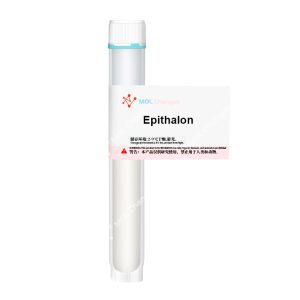Oxytocin is a neuropeptide composed of nine amino acids. Synthesized within the paraventricular nucleus (PVN) and supraoptic nucleus of the hypothalamus, it is stored in the posterior pituitary gland. First discovered and artificially synthesized in 1906, its traditional recognition as a key physiological hormone revolves around initiating and sustaining labor; rhythmic uterine smooth muscle contractions being the primary mechanism of action.
Postpartum mammary gland myoepithelial cell contraction (facilitating both production and subsequent ejection of milk) is another well documented essential role. Inhibiting sympathetic nervous activity, reducing blood pressure and cortisol concentrations, wound healing and all related anti-inflammatory responses are additional physiological contributions oxytocin makes.
At the turn of the century neuroscience pushed the definition of oxytocin further; a social neuropeptide emerged as the more accurate description. Animal models have provided substantial evidence that oxytocin receptor gene expression directly influences social behaviors. Social and neuroregulatory levels of action are now both seen as part of what oxytocin ‘does’.
Enhancing social cognition, mutual trust, various forms of empathy and intimate bonding are all promoted by it. Stress and emotion regulation specifically, through suppression of the hypothalamic-pituitary-adrenal (HPA) axis, see oxytocin as a key regulator.
Clinically oxytocin participates in fundamental physiological processes – G protein coupled receptors are widely distributed, and all the previously mentioned effects (cardiovascular, psychological, or otherwise) can be and are being measured as positive outcomes of its action. Psychological interventions for autism spectrum disorders, social anxiety, Post-traumatic stress disorder (PTSD) and more, are all being shaped by and to some extent defined by oxytocin.
序列
Cys-Tyr-Ile-Gln-Asn-Cys-Pro-Leu-Gly-NH2 (Disulfide bridge:Cys1-Cys6)
化学文摘社编号
50-56-6
分子式
C43H66N12O12S2
分子量
1007.19
Related Research Of Oxytocin
1.Stimulating Uterine Contractions
Since its discovery, oxytocin has been primarily used for this specific purpose – stimulating uterine contractions, creating the favorable conditions for parturition. It binds to oxytocin receptors (a form of G protein-coupled receptor) located on uterine smooth muscle cells. Activation of specific calcium channels within the cell membrane leads to a significant increase in intracellular calcium concentration.
Myosin light-chain kinase is then activated, resulting in the aforementioned rhythmic contractions of at least the endometrial smooth muscle. These ‘top-down’ contractions closely resemble manually pushing the fetus outward.
Clinical trials have shown intravenous administration to reduce contraction intervals to between 2-3 minutes; prolongation of duration is also a well documented effect, effective labor contractions being formed thereby. Further research indicates that oxytocin-induced contractions are not merely a facilitative tool in delivery, postpartum rapid vascular closure at the separation site (preventing hemorrhage being one of the more important outcomes) playing a near essential role.
2.Promoting Milk Ejection
Milk ejection depends on the neuroendocrine reflex system, the let-down reflex. Infant suckling the mother’s nipple provides the initial stimulation, nerve endings transmitting said signals to the hypothalamus. Oxytocin is synthesized and released there, traveling through the bloodstream to act on myoepithelial cells (surrounding mammary alveoli and smaller ducts), their contraction being the end result of milk ejection.
One study found maternal behavior in female mice was suppressed after 3 hours of fasting, active milk secretion being one of the suppressed behaviors. Exogenous oxytocin restored this behavior completely – direct proof of its efficacy in promoting milk ejection.
3.Promoting Prosocial Behavior
Social interactions are to some degree hardwired into the human brain. Selfish individuals use primarily the orbitofrontal cortex (OFC) to process all forms of ‘social value’, prosocial individuals more so the amygdala. Equitable distribution is a naturally occurring prosocial outcome.
Oxytocin administration has been shown to push selfish individuals toward more prosocially based behavior.
4.Cardiovascular Regulation and Tissue Repair
Cardiovascular disease is the leading cause of death globally. Myocardial infarction results in massive cardiomyocyte death; the near complete lack of self-repair capacity within adult cardiomyocytes represents a primary obstacle to any form of cardiac recovery.
Following cryogenic injury to zebrafish hearts, researchers observed significantly increased oxytocin mRNA expression in the brain, a consequent sustained elevation of oxytocin specifically within the heart itself. Chemical inhibition of this oxytocin expression substantially suppressed all measurable cardiac repair processes – activation of new epicardial cells being one of the more prominent examples.
This study was the first to clearly define oxytocin’s crucial, promotive role in at least some aspects of cardiac cell repair.
5.Anti-inflammatory
In various forms of cardiovascular disease, constant low-grade inflammation and the associated oxidative stress are another near universal barrier to proper cell repair. Oxytocin significantly suppresses the release and subsequent expression of multiple pro-inflammatory factors, reduces the generation of true inflammatory cells, and through enhanced (endogenous) antioxidants like glutathione peroxidase, mitigates all aspects of that oxidative damage.
6.Regulating Appetite and Metabolism
Oxytocin plays a well documented key role in both appetite and more general metabolism. Synthesized in hypothalamic neurons that project to near all brain regions, it amplifies satiety signals (brainstem based) – a near immediate strong ‘fullness’ being the end result of feeding.
Direct central nervous system action on dopamine seeking pathways reduces the motivation to seek out high reward foods (fat/sugar being prime examples). Studies have also shown oxytocin to increase insulin from pancreatic β-cells, and enhance glucose homeostasis.
COA
高效液相色谱法
MS








